Fellow of The Electrochemical Society was established in 1989 for advanced individual technological contributions in the fields of electrochemistry and solid state science and technology and service to the Society. These members are being recognized at the plenary session for scientific achievements, for leadership, and for active participation in the affairs of ECS. Each year, up to 15 renowned scientists and engineers are chosen by their peers for this honor. Join us in celebrating the 2019 class of the Fellows of The Electrochemical Society.
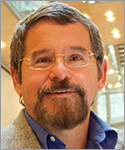 Joseph Wang is a Science Applications International Corporation (SAIC) Endowed Chair and distinguished professor in the Department of Nanoengineering at the University of California, San Diego (UCSD). He is also the director of the UCSD Center of Wearable Sensors and the founding editor of Electroanalysis. He served as the chair of the Department of Nanoengineering (2014–2019) and as the director of Center for Bioelectronics of Arizona State University (2004–2008).
Joseph Wang is a Science Applications International Corporation (SAIC) Endowed Chair and distinguished professor in the Department of Nanoengineering at the University of California, San Diego (UCSD). He is also the director of the UCSD Center of Wearable Sensors and the founding editor of Electroanalysis. He served as the chair of the Department of Nanoengineering (2014–2019) and as the director of Center for Bioelectronics of Arizona State University (2004–2008).
Wang received his DSc in chemistry from the Technion – Israel Institute of Technology in Haifa, Israel, in 1978. Over the past three decades, he has made pioneering contributions to the fields of electrochemical devices, wearable biosensors, electroanalytical techniques, nanomachines, and nanobioelectronics.
Wang has published more than 1,070 papers and 11 books. He also holds 30 patents. These publications have been cited approximately over 107,000 times, and his h-index is 160. He has been an ISI Thomson Reuters Highly Cited Researcher in both chemistry and engineering between 2014 and 2019.
Wang received the ECS Sensor Division Outstanding Achievement Award in 2018, the ACS Awards for Electrochemistry (2006) and Instrumentation (1999), and the SEAC C. N. Reilley Award for Electroanalytical Chemistry in 2019. He has also received 10 honorary professorships from around the globe, as well as three medals of honors from the UK, Australia, and the Czech Republic.
Wang is a fellow of the Royal Society of Chemistry (RSC) and the American Institute for Medical and Biological Engineering (AIMBE). Wang has guided over 400 PhD students and postdoc fellows over his career.
 Yushan Yan is the Henry B. du Pont Chair of Chemical and Biomolecular Engineering at the University of Delaware. He recently served as the Founding Associate Dean for Research and Entrepreneurship of the university’s College of Engineering.
Yushan Yan is the Henry B. du Pont Chair of Chemical and Biomolecular Engineering at the University of Delaware. He recently served as the Founding Associate Dean for Research and Entrepreneurship of the university’s College of Engineering.
Yan studied chemical physics at the University of Science and Technology of China, catalysis at the Dalian Institute of Chemical Physics, and chemical engineering at the California Institute of Technology.
He worked for AlliedSignal as a senior staff engineer before joining the University of California, Riverside, where he held the positions of university scholar, University of California presidential chair, and department chair.
Yan’s major accolades include the Breck Award from the International Zeolite Association, the Nanoscale Science and Engineering Forum Award, the Braskem Award for Excellence in Materials Engineering and Science from the American Institute of Chemical Engineers, the ECS Energy Technology Division Research Award, Fellow of the American Association for the Advancement of Science, and Fellow of the National Academy of Inventors.
He is an inventor on more than 25 issued or pending patents that have led to start-ups (e.g., NanoH2O and W7Energy); an author on over 250 journal publications (18,000+ citations, h-index = 73 and average citations/paper = 73, Web of Science); and an advisor for more than 30 PhD students and more than 30 postdoctoral researchers, with over 20 of them holding faculty positions.
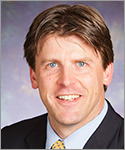 Paul J. A. Kenis is the Elio E. Tarika Endowed Chair and a professor of chemical and biomolecular engineering at the University of Illinois at Urbana-Champaign (UIUC). He is also an investigator of the International Institute for Carbon-Neutral Energy Research, a world premier institute between Kyushu University in Japan and UIUC. Kenis, a native of the Netherlands, received his BS in chemistry from Nijmegen Radboud University in 1993, where he worked on model systems for metalloproteins with Roeland Nolte, and his PhD in chemical engineering from the University of Twente in 1997, working with David Reinhoudt on films for nonlinear optical applications. His postdoctoral research with George Whitesides at Harvard University focused on the then-emerging area of microfluidics.
Paul J. A. Kenis is the Elio E. Tarika Endowed Chair and a professor of chemical and biomolecular engineering at the University of Illinois at Urbana-Champaign (UIUC). He is also an investigator of the International Institute for Carbon-Neutral Energy Research, a world premier institute between Kyushu University in Japan and UIUC. Kenis, a native of the Netherlands, received his BS in chemistry from Nijmegen Radboud University in 1993, where he worked on model systems for metalloproteins with Roeland Nolte, and his PhD in chemical engineering from the University of Twente in 1997, working with David Reinhoudt on films for nonlinear optical applications. His postdoctoral research with George Whitesides at Harvard University focused on the then-emerging area of microfluidics.
Kenis’s research at UIUC revolves around microchemical systems. Applications range from platforms for energy conversion such as fuel cells, for radiolabeling of biomolecules, and for protein/pharmaceutical crystallization to platforms for cell biology studies.
Over the last decade, he has focused on the electrocatalytic reduction of CO2 to valuable chemical intermediates and fuels—developing suitable catalysts, electrodes, and electrolyzers, determining suitable operation conditions, and performing techno-economic analysis as a guide toward more energy-efficient systems.
Kenis has authored over 200 peer-reviewed publications and 14 patents. He has been recognized with a 3M Young Faculty Award, an NSF CAREER Award, a Xerox Award, and best paper awards from the American Institute of Chemical Engineers and the Society for Experimental Biology and Medicine.
He is a coauthor of reports on the prospects of CO2 utilization at scale issued by the National Academies as well as the global Mission Innovation consortium.
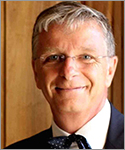 Hubert Girault entered higher education in France at the age of 16 and graduated with a PhD (England) before becoming a lecturer at the University of Edinburgh (Scotland) in 1985. He was appointed professor of physical chemistry at the École Polytechnique Fédérale de Lausanne (Switzerland) in 1992 and has been the director of the Laboratoire d’Electrochimie Physique et Analytique ever since its creation. The laboratory went on to move to the new EPFL-Valais campus in the spring of 2015.
Hubert Girault entered higher education in France at the age of 16 and graduated with a PhD (England) before becoming a lecturer at the University of Edinburgh (Scotland) in 1985. He was appointed professor of physical chemistry at the École Polytechnique Fédérale de Lausanne (Switzerland) in 1992 and has been the director of the Laboratoire d’Electrochimie Physique et Analytique ever since its creation. The laboratory went on to move to the new EPFL-Valais campus in the spring of 2015.
His research career started in 1979 in the field of electrochemistry at soft interfaces. In 1985, he developed an interest in electroanalytical chemistry, then in lab-on-chip techniques. Since 2000, he has also been very active in the field of bioanalytical chemistry—particularly in immunoassays, electrophoresis, proteomics, and mass spectrometry. Also since 2000, he has run a comprehensive research program on artificial water splitting and carbon dioxide reduction at soft interfaces. His laboratory is now installing a large-scale pilot plant for indirect water electrolysis using redox flow batteries in Martigny-Valais.
During his career, he has supervised more than 64 PhD students (plus several in progress) and trained many postdoctoral fellows. Of them, 28 former PhDs or postdocs are now professors in Canada, China, Denmark, France, Ireland, Japan, Korea, Singapore, Taiwan, Turkey, the UK, and the U.S. Education has been a major part of his activities, and his lecture notes have formed the basis of a textbook entitled Electrochimie Physique et Analytique (now in its third edition) and translated in English as Analytical and Physical Electrochemistry.
Overall, Girault’s scientific output can be quantitatively summarized as more than 500 publications with more than 17,000 citations and an h-index of 71 (ISI Web of Knowledge); 20 patents have been granted, and most are under licensing agreement.
Girault always had an interest in scientific publishing. Between 1996 and 2001, he was an associate editor of the Journal of Electroanalytical Chemistry which, at the time, was one of the major reference journals in the field. He is also the vice president of the Presses Polytechniques et Universitaires Romandes. He has served on many editorial boards. He served as an associate editor of Chemical Science (Royal Society of Chemistry) from its creation in 2010 until 2018.
Girault has been the founding director of three companies: Dydropp (1982, dissolved 1986), pioneer in the production of video digitizing units for surface tension measurements, a technique now widely used by many companies; Ecosse Sensors (1990, now part of Inverness Medical Technologies, USA), active in the production of laser photo-ablated carbon electrodes for heavy metal detection; and DiagnoSwiss (1999–2014), active in the production of fast immunoassay systems. He is now assisting a new start-up company producing inkjet-printed electrodes (www.sensasion.ch). He is also active in the development of Zhejiang Bioharmonious SciTech, Hangzhou, China, a company developing bacteria diagnostics by mass spectrometry.
Girault was the chairman of the Electrochemistry Division at EUCHEMS (2008–2010) and was the chairman of the annual meeting of the International Society of Electrochemistry in Lausanne in 2014.
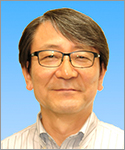 Masayoshi Watanabe is a professor at Yokohama National University. He received his BS and PhD (1983) from Waseda University. Following a position as a visiting scientist with Royce W. Murray at University of North Carolina (1988–1990), he joined Yokohama National University in 1992 and was promoted to a full-time professor in 1998.
Masayoshi Watanabe is a professor at Yokohama National University. He received his BS and PhD (1983) from Waseda University. Following a position as a visiting scientist with Royce W. Murray at University of North Carolina (1988–1990), he joined Yokohama National University in 1992 and was promoted to a full-time professor in 1998.
Watanabe’s research interest has been mainly concerned with ionics and nanostructured materials. Ionics has become an important scientific area for the realization of key materials for advanced electrochemical devices, which supports a sustainable society. He is a research leader in the fields of ionic liquids and polymer electrolytes. His recent research activity has been expanded to nanostructured materials, including block copolymer assembly in ionic liquids.
He has published more than 400 original research papers and 150 books and reviews in these and related fields, with over 30,000 citations and a Hirsch index of 89.
Among his many honors, Watanabe has received the ECS Scientific Achievement Award of Japan (ECSJ) (2006), the Award of the Society of Polymer Science, Japan (SPSJ) (2006), the ECSJ Takei Award (2016), the ECS Physical and Analytical Electrochemistry Division Max Bredig Award (2016), and the Commendation for Science and Technology by the Minister of the MEXT of Japan (2017). He served as president of the Ionic Liquid Research Association in Japan (2006–2010), vice president of SPSJ (2014–2016), and president of ECSJ (2018–2019). He also contributed greatly to the collaboration between ECS and ECSJ for the establishment of PRiME.
 Alison J. Davenport is a professor of corrosion science and head of the School of Metallurgy and Materials at the University of Birmingham, UK. She received her PhD from the University of Cambridge, and then spent time at Brookhaven National Laboratory, New York, and the University of Manchester, UK, before moving to Birmingham.
Alison J. Davenport is a professor of corrosion science and head of the School of Metallurgy and Materials at the University of Birmingham, UK. She received her PhD from the University of Cambridge, and then spent time at Brookhaven National Laboratory, New York, and the University of Manchester, UK, before moving to Birmingham.
Her research has focused on in situ characterization of corrosion processes using synchrotron X-ray methods including scattering, spectroscopy, imaging, and elemental mapping for a wide range of applications including nuclear waste storage, airframe alloys, biomedical alloys, and fuel cells.
During the course of her career, she has served ECS as an associate editor of the Journal of The Electrochemical Society, chair of the ECS Corrosion Division, chair of the ECS Europe Section, and member of the Publication Committee and Committee for Society Visibility and Prestige.
Within the UK, she has served on the government’s Advanced Materials Leadership Council and as chair of the Science and Technology Facilities Council’s Science Board. In 2018, she was awarded an OBE for services to electrochemistry and corrosion science in the Queen’s Birthday Honours List.
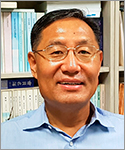 Yang-Kook Sun is a professor of energy engineering at Hanyang University in Seoul, South Korea. He received his PhD in chemical engineering from Seoul National University in 1992. He was a group leader at Samsung Advanced Institute of Technology and contributed to the commercialization of the lithium polymer battery. After joining Hanyang University (2000–2008), he set up one of the largest and most active battery material research centers, called ITRC, in Korea, which is supported by the Ministry of Information and Communication of the Republic of Korea. He has trained 57 students and currently educates 22 students.
Yang-Kook Sun is a professor of energy engineering at Hanyang University in Seoul, South Korea. He received his PhD in chemical engineering from Seoul National University in 1992. He was a group leader at Samsung Advanced Institute of Technology and contributed to the commercialization of the lithium polymer battery. After joining Hanyang University (2000–2008), he set up one of the largest and most active battery material research centers, called ITRC, in Korea, which is supported by the Ministry of Information and Communication of the Republic of Korea. He has trained 57 students and currently educates 22 students.
His major research interests are design, synthesis, and structural analysis of advanced energy storage and conversion materials for applications in electrochemical devices and lithium-ion, lithium-sulfur, lithium-air, and sodium-ion batteries.
One of his major achievements was the discovery of a new concept of layered concentration gradient NCM cathode materials for lithium-ion batteries.
Sun has conducted several international collaborations around the world. Today, his research has cumulated to more than 580 publications and 491 registered and applied patents in the field of batteries and electrochemistry. In addition, he was selected as a Clarivate Analytics Highly Cited Researcher for ranking among the top 1% of researchers in his specific field from 2016 to 2018. He is still very involved in his field of research and continues to collaborate with multiple researchers from around the world to make contributions to the field of batteries and electrochemistry.
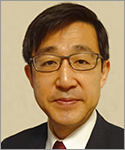 Takayuki Homma is a professor of applied chemistry, Faculty of Science and Engineering, and dean of the Academic Affairs Division at Waseda University in Tokyo, Japan. He received his BE, ME, and PhD in applied physical chemistry from Waseda University in 1987, 1989, and 1992, respectively, and has been a member of the faculty of the university since 1991. From 1997 to 1998, he was a visiting associate professor at Stanford University.
Takayuki Homma is a professor of applied chemistry, Faculty of Science and Engineering, and dean of the Academic Affairs Division at Waseda University in Tokyo, Japan. He received his BE, ME, and PhD in applied physical chemistry from Waseda University in 1987, 1989, and 1992, respectively, and has been a member of the faculty of the university since 1991. From 1997 to 1998, he was a visiting associate professor at Stanford University.
Homma is an active member of ECS and has served as an associate editor of the Journal of The Electrochemical Society since 2003. In July 2019, he began his term as a technical editor of the journal in the electrochemical/electroless deposition topical interest area.
He is also a member of the International Society of Electrochemistry, the Working Party on Electrochemical Engineering of the European Federation of Chemical Engineering, the Electrochemical Society of Japan, the Surface Finishing Society of Japan, and the Japan Institute of Electronics Packaging.
Homma’s current research interests include theoretical analysis on the reaction mechanisms and processes of electrochemical and electroless deposition using ab initio molecular orbital (MO) and density functional theory (DFT) approaches, developing atomic-scale analytical approaches to investigate solid/liquid interfaces using surface-enhanced Raman scattering (SERS) microscopy with plasmonic sensors, nanoscale characterization, and control of electrochemical deposition processes and their application for various devices and systems, such as ultra-high density data storage devices, post-Li-ion batteries for large-scale applications, solar cells, thermoelectric devices, microreactors, etc.
He has published 214 original papers, 42 review papers, and 17 book chapters.
 Vito Di Noto is a full professor of electrochemistry for energy and solid state chemistry in the Department of Industrial Engineering of the University of Padova, where he heads the Section of Chemistry for Technology and leads the Chemistry of Materials for the Metamorphosis and the Storage of Energy Group (CheMaMSE).
Vito Di Noto is a full professor of electrochemistry for energy and solid state chemistry in the Department of Industrial Engineering of the University of Padova, where he heads the Section of Chemistry for Technology and leads the Chemistry of Materials for the Metamorphosis and the Storage of Energy Group (CheMaMSE).
Di Noto joined the faculty of the University of Padova in 1992. He focused his investigations on electrochemistry, with a particular focus on the development of new materials for applications in the field of electrochemical energy conversion and storage devices such as secondary batteries, fuel cells, solar cells, and—more recently—redox flow batteries.
In the late 1990s, Di Noto pioneered the secondary magnesium ion battery and devised breakthrough approaches for the synthesis of electrolytes and electrode materials. He also provided seminal contributions to the understanding of the mechanisms of ion conduction in condensed phases.
Currently, his research activity focuses on the synthesis and the studies of the structure, relaxation phenomena, and electrochemistry of ion-conducting, dielectric, and electrode materials. Di Noto’s research covers the entire value chain, from the synthesis of the materials to the physicochemical and electrochemical characterization. It also includes the fabrication and testing of prototype devices for performance and durability.
He organized and chaired top-level events in the field of electrochemistry, including several ECS symposia, meetings for the International Society for Solid State Ionics, and international symposia on polymer electrolytes. He is on the editorial board of several high-impact peer-reviewed journals on electrochemistry.
Di Noto is the author or coauthor of more than 285 publications, including 24 patents.
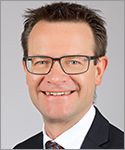 Thomas J. Schmidt has been a professor and chair of electrochemistry at ETH Zürich since 2011 and head of the Energy and Environment Research Division at Paul Scherrer Institute (PSI) in Villigen, Switzerland, since 2018. From 2011 to 2017, he was head of the Electrochemistry Laboratory at PSI. Since 2014, Schmidt has also served as the director of the Swiss Competence Center for Energy Research (SCCER) Heat and Electricity Storage.
Thomas J. Schmidt has been a professor and chair of electrochemistry at ETH Zürich since 2011 and head of the Energy and Environment Research Division at Paul Scherrer Institute (PSI) in Villigen, Switzerland, since 2018. From 2011 to 2017, he was head of the Electrochemistry Laboratory at PSI. Since 2014, Schmidt has also served as the director of the Swiss Competence Center for Energy Research (SCCER) Heat and Electricity Storage.
After receiving his PhD in chemistry from the University of Ulm, Germany, in 2000, he joined Lawrence Berkeley National Laboratory as a chemist postdoctoral fellow. He continued to work at PSI in the Electrochemistry Laboratory. From 2002 to 2010, he worked at BASF Fuel Cell GmbH (formerly Pemeas GmbH) as an R&D director.
From 2009 to 2011, he served as a lecturer for physical chemistry in the Provadis School of International Management and Technology, University of Applied Sciences in Frankfurt, Germany.
Currently, Schmidt serves as an associate editor of the Journal of The Electrochemical Society and is a member of the ECS Meetings Subcommittee.
He was awarded the ECS Charles W. Tobias Young Investigator Award (2010), the Otto Mønsted Visiting Professorship at the Technical University of Denmark (2013), and the C. W. Schönbein Gold Medal of Honor from the European Fuel Cell Forum (2019).
Throughout his career, Schmidt’s research has been focused around all aspects of electrochemical energy conversion and storage with an emphasis on catalysts, materials, processes, components and diagnostics around hydrogen-related technologies, and redox-flow batteries.
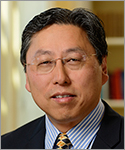 Larry Nagahara is currently the associate dean for research in the Whiting School of Engineering and a research professor in the Department of Chemical and Biomolecular Engineering at Johns Hopkins University.
Larry Nagahara is currently the associate dean for research in the Whiting School of Engineering and a research professor in the Department of Chemical and Biomolecular Engineering at Johns Hopkins University.
Nagahara received his BS in physics from the University of California, Davis, and his PhD in physics from Arizona State University under Professor Stuart Lindsay. After receiving his PhD, he did a postdoc fellowship in Akira Fujishima’s lab at the University of Tokyo and later became an assistant professor.
In 1994, Nagahara joined Motorola, rose to the rank of Distinguished Member of the Technical Staff, and led the company’s nanosensor effort. In 2007, he joined the National Cancer Institute as an associate director within the Division of Cancer Biology, where he directed and coordinated programs and research activities related to expanding the role of the physical sciences and engineering in cancer research.
For more than 25 years, Nagahara has devoted himself as a thought leader and steadfast advocate of nanotechnology and sensor application applied toward biomedical applications. He has made lasting contributions through his groundbreaking work on nanometer scale phenomena at the solid-liquid interface with scanning probe microscopy and his pioneering applications made toward bio/chem nanosensors. He has more than 100 peer-reviewed articles, three book chapters, and close to 30 issued/filed patents in these fields.
As an active member of the ECS Sensor Division, Nagahara has helped organize over 20 symposia, has served as an executive council member since 2008, and is currently the secretary of the ECS Sensor Division.
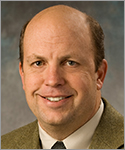 Mike Perry currently leads the electrochemical systems team at United Technologies Research Center (UTRC). The major focus of his research has been on fuel cells and flow batteries, with his primary fields of interest being mass transport, flow-cell designs, in situ diagnostics, and durability.
Mike Perry currently leads the electrochemical systems team at United Technologies Research Center (UTRC). The major focus of his research has been on fuel cells and flow batteries, with his primary fields of interest being mass transport, flow-cell designs, in situ diagnostics, and durability.
Perry led the UTC team that successfully determined the degradation mechanism responsible for accelerated carbon corrosion in polymer-electrolyte fuel cells (PEFCs) during repeated start-up/shut-down (SUSD) cycles. His team also developed multiple system-level SUSD-decay mitigation strategies.
He is the author or coauthor of four book chapters on PEFC durability. Perry pioneered a new business model for UTRC by licensing intellectual property to a start-up company, Vionx Energy, which was specifically created to commercialize what the U.S. Department of Energy’s Advanced Research Projects Agency–Energy (ARPA-E) office describes as “UTRC’s breakthrough flow battery cell stack” technology.
Perry currently holds 66 U.S. patents. He was the recipient of the ECS New Electrochemical Technology Award in 2012 for the development and demonstration of transit buses powered by PEFC power plants with exceptional reliability and long lifetimes (currently over 30,000 operating hours), and a R&D 100 Award in 2013 for the development of high-performance flow batteries.
Perry earned his MS in chemical engineering from the University of California, Berkeley, where his key mentors were Elton J. Cairns and John Newman. Before starting his career in electrochemical engineering, Perry served for over nine years as an aviator in the U.S. Navy, flying EA-6B Prowler aircraft from aircraft carriers. He is a veteran of the 1991 Gulf War.
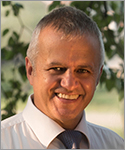 Flavio Maran is a professor of physical chemistry and electrochemistry in the Department of Chemistry at the University of Padova, where he leads the Molecular Electrochemistry and Nanosystems Group. He is also a research professor in the Department of Chemistry at the University of Connecticut.
Flavio Maran is a professor of physical chemistry and electrochemistry in the Department of Chemistry at the University of Padova, where he leads the Molecular Electrochemistry and Nanosystems Group. He is also a research professor in the Department of Chemistry at the University of Connecticut.
Maran obtained his doctoral laurea degree in chemistry, summa cum laude, from the University of Padova in 1980. He has been a visiting scientist or professor at the National Research Council of Canada, University of Western Ontario, University of Sherbrooke, Utah State University, University of La Laguna, Temple University, Princeton University, Okayama University, and Kyoto University.
He is a fellow of the Japan Society for the Promotion of Science, the recipient of the 2014 Jaroslav Heyrovsky Prize for Molecular Electrochemistry, awarded by the International Society of Electrochemistry (ISE), and the winner of the 2018 Manuel M. Baizer Award, awarded by the ECS Organic and Biological Electrochemistry Division. He is on the editorial board of various scientific journals, including purely electrochemical journals such as ChemElectroChem (as one of the editorial board chairs) and Current Opinion in Electrochemistry, and is a regular organizer of ECS and ISE symposia. He is a member of ECS, ISE, the Italian Chemical Society, and ACS.
His research focuses on molecular and organic electrochemistry, monolayer-protected gold clusters, electron-transfer reactions, monolayers and biomimetic membranes on electrodes, and electrochemical biosensors. He has always been an advocate of the molecular approach to address scientific problems and thus of the importance of explaining the fine details of electrochemical processes on a true molecular basis.
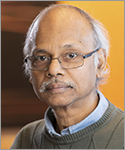 Alok M. Srivastava attended Bombay University, India, and graduated with an MS in inorganic and solid state chemistry in 1981. He obtained his PhD in 1986 from Polytechnic University in Brooklyn, New York. Then, in 1989, he joined GE Global Research following a postdoctoral fellowship at Polytechnic University. Currently, he is a principal scientist at GE Research.
Alok M. Srivastava attended Bombay University, India, and graduated with an MS in inorganic and solid state chemistry in 1981. He obtained his PhD in 1986 from Polytechnic University in Brooklyn, New York. Then, in 1989, he joined GE Global Research following a postdoctoral fellowship at Polytechnic University. Currently, he is a principal scientist at GE Research.
Srivastava’s research describes the relationship between synthesis, crystal structure, and optical properties of rare earth and transition metal ions in solids. Srivastava integrates results of experimental studies with theoretical approaches to provide a fundamental understanding of materials’ optical properties. For over 20 years, he has collaborated with research teams at Global Research, GE Lighting, GE Healthcare, and GE Energy on the design of optical materials for fluorescent lamps, LED lighting, solar cells, inorganic bio-tagging, and radiation detectors (scintillators). His work has resulted in the identification and development of new commercially important phosphors and scintillators and in quality improvements that enable superior device performance.
Srivastava is the inventor or coinventor of 140 patents and is the author or coauthor of more than 130 journal articles. For his pioneering research in oxide quantum splitting phosphors, he was awarded ECS’s first Luminescence and Display Materials Division Outstanding Achievement Award in 2004. He has also served as the chair of the ECS Luminescence and Display Materials Division.
In 2015, he was appointed the editor-in-chief of the Optical Materials journal.





